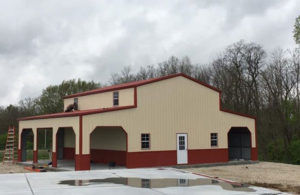
Metal barns, renowned for their durability and resilience, may face a unique set of challenges when lightning strikes. Understanding the potential consequences and adopting preventive measures is crucial for ensuring the safety of both the structure and its occupants.
Conductivity of Metal
Metal, being an excellent conductor of electricity, presents both advantages and challenges during a lightning storm. While the metal framework may provide a pathway for lightning to follow, it also offers a direct route for the electrical charge to reach the ground, minimizing the risk of severe damage.
Lightning Strikes and Fire Risk
When lightning strikes a metal barn, the intense heat generated can pose a fire risk. Combustible materials within the barn, such as hay or stored equipment, may ignite due to the extreme temperatures. Proper fire prevention measures, including lightning rods and fire-resistant materials, can mitigate this risk.
Grounding and Lightning Rods
Grounding is a critical aspect of lightning protection for metal structures. Installing lightning rods on the roof and ensuring proper grounding channels the electrical discharge safely into the ground, reducing the likelihood of structural damage and fire.
Protecting Electronics and Equipment
Metal barns often house valuable equipment and electronics. Lightning-induced power surges can damage these assets. Installing surge protectors and unplugging electronic devices during severe storms can safeguard against electrical damage.
Safety Measures for Livestock
If the metal barn is used for housing livestock, their safety is paramount during a lightning storm. Ensure that the structure is well-ventilated to dissipate any buildup of gases caused by lightning. Additionally, provides a safe and grounded area for animals to seek refuge.
Regular Inspections and Maintenance
Conducting regular inspections of the metal barn’s lightning protection system is essential. Check for any signs of corrosion, damage, or loose connections in lightning rods and grounding components. Timely maintenance ensures the system remains effective.
Emergency Preparedness
Having an emergency plan in place is crucial for dealing with the aftermath of a lightning strike. This includes knowing evacuation routes, having firefighting equipment on hand, and being aware of emergency contact information.
Professional Consultation
Consulting with a lightning protection professional can provide tailored solutions for the specific risks associated with the location and design of the metal barn. Professionals can assess the need for additional protection measures and ensure compliance with industry standards.
Conclusion
While metal barns are inherently resilient to lightning, proactive measures are necessary to mitigate potential risks. A comprehensive approach ensures that when lightning strikes, the impact is minimized, and the structure remains a safe haven for both occupants and assets.